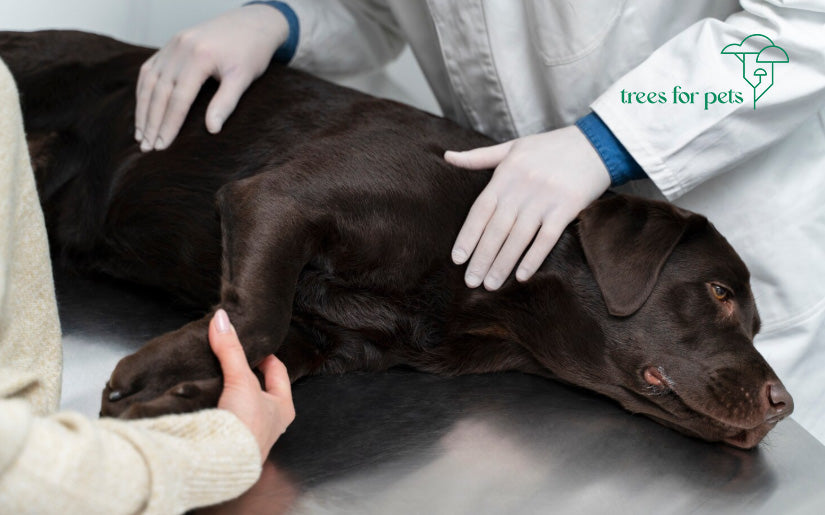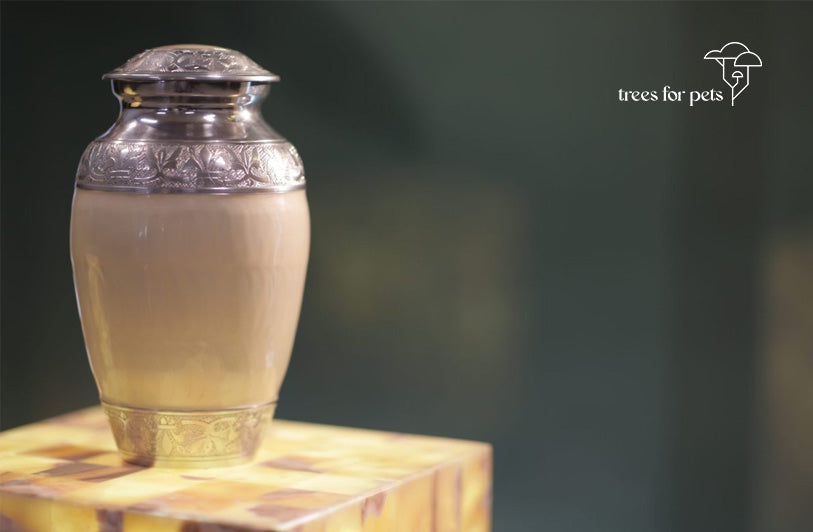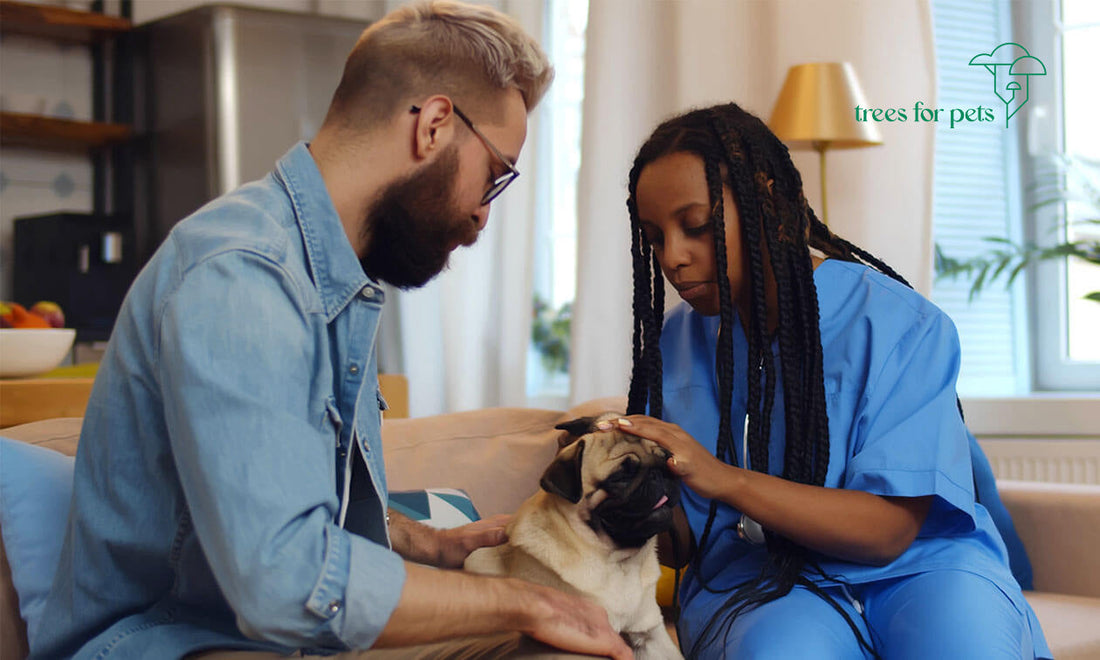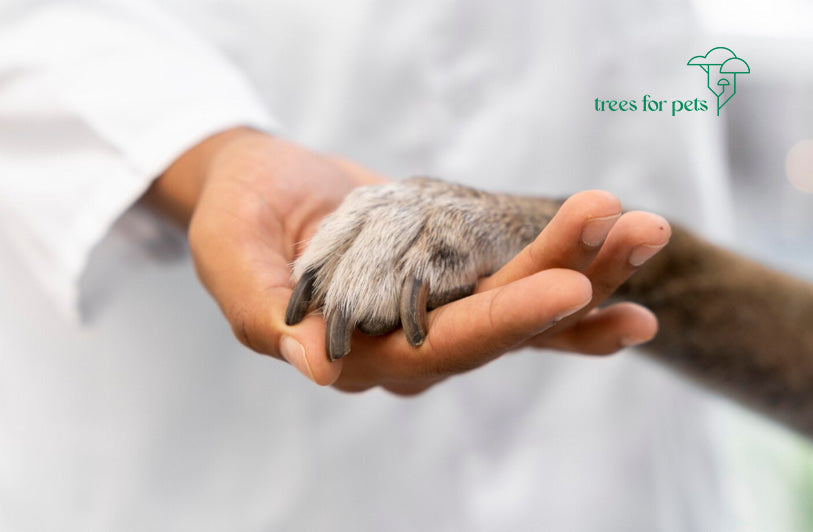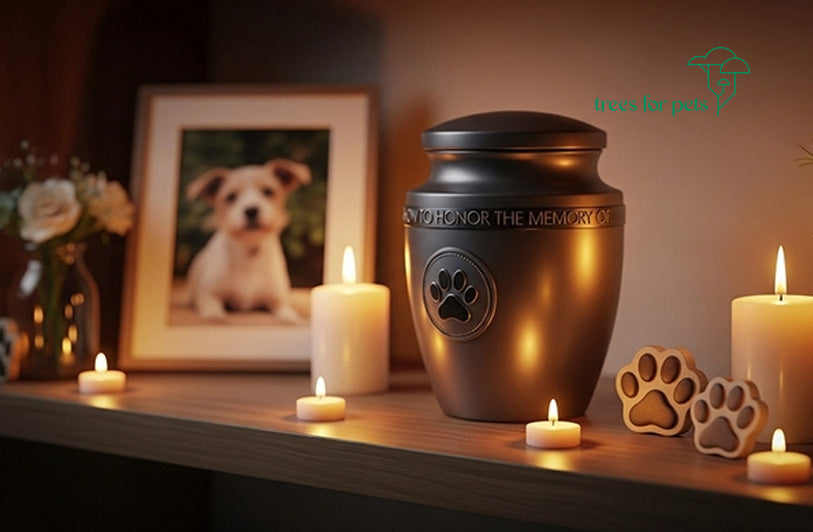Our pets are family but when illness, age, or pain begins to outweigh quality of life, choosing pet euthanasia can be the most compassionate gift we can give them.
Even though we may know it’s the right choice, the process can feel overwhelming and frightening. Many pet parents worry about what will happen, how their pet will feel, and whether they’ll be able to cope.
This guide is designed to walk you through the euthanasia process step by step, offering clarity, comfort, and support so that you can prepare yourself emotionally and practically for this tender moment.
What Is Pet Euthanasia?
Pet euthanasia is a medical procedure that gently ends an animal’s life to relieve suffering. It is performed by a veterinarian using medications that bring about a painless, peaceful passing.
The word “euthanasia” comes from the Greek meaning “good death.” And while nothing about losing a pet feels good, the intention is to give your beloved companion a dignified, pain-free goodbye.
Step 1: Recognizing When It’s Time
One of the hardest questions is, “How do I know it’s time?”
Every pet is different, but here are signs that euthanasia may be the kindest option:
- Chronic pain that cannot be managed with medication.
- Difficulty walking, standing, or moving without distress.
- Loss of appetite or refusal to eat for several days.
- Struggling to breathe comfortably.
- Severe incontinence or inability to control bodily functions.
- Withdrawal from family or loss of interest in favorite activities.

Veterinarians often talk about quality of life scales, which measure factors like pain, appetite, mobility, and overall happiness. If most of these areas are consistently poor, it may be time to consider letting go.
It can help to ask yourself: Am I keeping them alive for me, or for them? Choosing euthanasia is not about giving up—it’s about love.
Step 2: Making the Appointment
Once you and your vet have decided that euthanasia is the most compassionate choice, the next step is scheduling the procedure.
You may choose:
- At the veterinary clinic: Many families go to their vet’s office, where everything is prepared.
- At home euthanasia: Some vets offer home visits so your pet can pass peacefully in familiar surroundings.
When booking, let the clinic know if you’d like extra time or privacy. Most vets will try to accommodate your wishes, understanding how deeply emotional this appointment is.
Step 3: Preparing Yourself and Your Pet
The days and hours leading up to the appointment are often the hardest.
Things you can do for your pet:
- Give them favorite foods, even “forbidden treats.”
- Take them to a special place, if they’re able (a park, beach, or sunny spot in the yard).
- Spend quiet time cuddling, brushing, or simply being present.
Things you can do for yourself:
- Arrange support—bring a friend or family member if you’re not sure you can manage alone.
- Think ahead about aftercare (cremation, burial, or aquamation) so you’re not forced to make decisions in the moment.
Write down or rehearse what you’d like to say to your pet when the time comes.
Step 4: Arriving at the Appointment
If you’re at the clinic, most vets will offer a private room where you can spend as much time as you need with your pet before and after the procedure. Some provide soft blankets, dimmed lighting, or calming music.
If you’ve chosen at-home euthanasia, the vet will set up in a quiet, comfortable space—perhaps your pet’s bed, the couch, or a sunny patch of floor.
Step 5: The Euthanasia Procedure (Step by Step)
Knowing what to expect can reduce fear. Here’s a typical walkthrough:
1. Sedation
- Your vet will usually begin with a sedative injection.
- This helps your pet relax, drift into a deep sleep, and feel calm.
- You’ll often notice their breathing slow and their body becoming heavier, like when they’re dozing.

2. The Euthanasia Injection
- Once your pet is fully relaxed, the vet will administer the euthanasia medication, usually into a vein.
- The drug (often pentobarbital) works quickly—within seconds, it gently stops brain activity and then the heart.
- Your pet does not feel pain; they are already asleep when this happens.
3. Passing
- Breathing will stop, followed by the heartbeat.
- The vet will check carefully to confirm your pet has passed.
4. What You May Notice
- Sometimes there are natural reflexes after death: small twitches, a sigh, or release of the bladder. These are normal and do not mean your pet is in distress.
- Many families find comfort in holding or stroking their pet during the process.
The entire procedure usually takes only a few minutes, but you will be given as much time as you need afterward to say goodbye.
Step 6: Aftercare Options
After your pet has passed, you’ll need to decide how to care for their remains. Pet funeral options include:
Cremation
- Private cremation ensures you receive your pet’s ashes back, often in an urn or keepsake.
- Communal cremation means your pet is cremated with others; ashes are not returned.
Aquamation
- A gentle, eco-friendly alternative that uses water and alkali instead of fire.
- You still receive ashes back, but the process is more sustainable.
Burial
- Home burial (if permitted) allows you to keep your pet close.
- Pet cemeteries provide a formal resting place you can visit.
Many veterinary clinics partner with local cremation or aquamation providers. You can ask for brochures ahead of time so you’re prepared.
Step 7: Honoring and Remembering
Saying goodbye doesn’t end with the procedure—it continues in the ways you choose to honor your pet’s life. Some ideas for pet memorial gifts:
- Creating a pet memory box with their collar, toys, and photos.
- Planting a memorial tree or flowers in their honor.
- Holding a small ceremony with family and friends.
- Wearing a piece of memorial jewelry that holds ashes or fur.
- Making a photo album or video tribute to celebrate their story.
These rituals can help turn grief into remembrance, keeping your pet’s spirit alive in your daily life.

Step 8: Coping with Grief
It’s normal to feel waves of sadness, guilt, or even relief after euthanasia. All of these feelings are valid. Remember: you acted out of love, giving your pet freedom from suffering.
Ways to support yourself include:
- Talking with friends or family who understand.
- Joining a pet loss support group, online or in person.
- Journaling about your pet’s life and your favorite memories.
- Allowing yourself to grieve without judgment—it’s okay to cry, to feel numb, or to smile at memories.
If your pet grief feels overwhelming or prolonged, reaching out to a grief counselor or therapist can provide extra support.
A Lasting Way to Remember Your Pet
A lasting way to remember your pet is through meaningful tributes that keep their spirit close. Options like memory boxes, personalized keepsakes, or memorial trees can provide comfort and connection. With Trees for Pets, you can honor your companion by planting a living tribute—a tree that grows in their memory, creating a legacy of love that lasts for generations.

